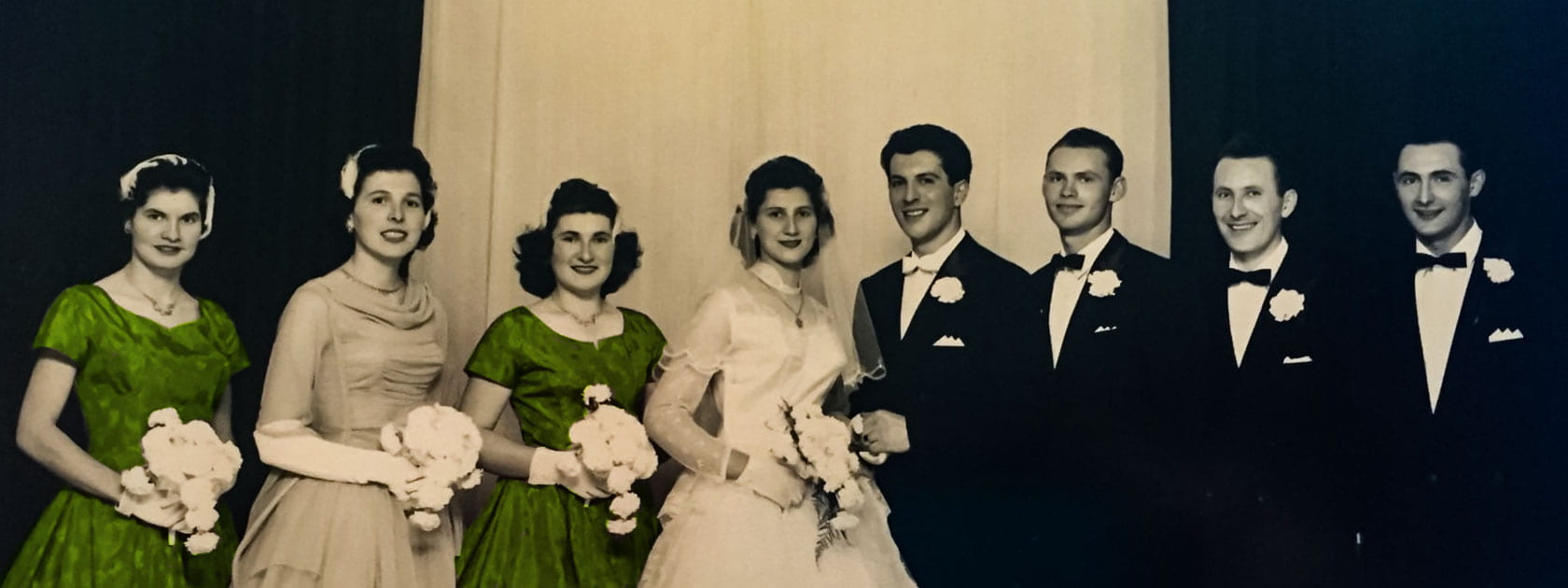
Above, Academic poster for Legends project on Massimo Capra. Created by: Ciara Greig in association with the University of Guelph’s Italian Heritage and Digital Applications program, 2025. Copyright Holder: Ciara Greig
Introduction
The purpose of this assignment is to gather information about Italian-Canadian legend and restaurateur Massimo Capra, in order to understand his efforts in shaping the Italian food scene in Toronto since his arrival in 1982, and the greater impact he has made in Canada as a whole. This will allow for an analysis of one of the most significant parts of Italian culture, its cuisine, in Toronto and the Greater Toronto Area. Capra’s immigration story is also addressed, with the purpose of understanding his desire to come to Canada. Most of the information has been collected from Massimo Capra’s Instagram page, @chefcapra, in which he has created a historical social media archive. Capra has amassed over 130k followers on his account, where he posts videos sharing recipes, explaining Italian traditions, and answering the public’s questions about his passion, his life as a chef, and his immigration story. Capra’s chef profile on his personal website massimocapra.com, offers a great resource for learning about his career history. There are other great sources, such as “get to know the chef” styled blogs, where Capra shares personal answers to the interviewer’s questions, allowing for a greater understanding of his history and his present character. The information made available by Capra is plentiful regarding the personal anecdotes he provides about his current life in Canada and his early life in Italy. He also shares freely what inspired him to pursue culinary endeavours, as well as what brought him to Canada to pursue them. However, information on the logistics of Capra’s immigration, as well as on the journey itself, is limited.
Analysis
Massimo Capra was born in Soresina, Northern Italy, on May 24th, 1960. As of 2025, Capra has been in the culinary industry for over 45 years, and is most well-known for his television roles as a previous judge on Chopped Canada, and as a chef-host of Restaurant Makeover, both of which air on The Food Network. Capra has also hosted his own television series, titled Gourmet Escapes, since 2023. He is also known for being the author of two Italian cuisine cookbooks: One Pot Italian Cooking (2011) and 3 Chefs: The Kitchen Men (2014). Capra is currently the proud owner and chef of 3 restaurants in Ontario, Canada, including Massimo’s Italian at Sheraton on the Falls Hotel in Niagara, Boccone Tracoria at Toronto’s Pearson International Airport, and Capra’s Kitchen in his hometown of Mississauga. Capra’s culinary journey began with his training in Salsomaggiore, Parma, at the age of 15. He began working at the Tracoria dall’ Amelia near Venice, and went on to work at many renowned Italian hotel restaurants. In 1982, Massimo Capra made the journey to Toronto and worked at a family-owned Italian restaurant, Archer’s, and later became a well-established chef at Prego della Piazza in Toronto.Massimo came to Canada primarily in pursuit of work. He states in an Instagram video from October 24th, 2025, that there’s a “brutal way of living in Italy, you can’t get anywhere. There’s a petty taxation system in Italy, it’s a nightmare.” (Capra, 2025) He shares how this was his primary motivation for leaving Italy, in hopes that he would be more successful and free of the brutal Italian system by coming to Canada. Capra also shares a more thorough response in an Instagram video from October 25, 2025, when asked by a follower why he left Italy, stating, “All the people that love Italy a lot, they’re all here. They’re all outside of Italy. I came out of Italy right in the 80s. All the terrorism, the Red Brigade, the left and right, and the red and the black, tons of strikes for stupid reasons. I don’t like illogical things. I had a hard time thinking that Italy was going somewhere fast. I accept certain things in Canada because this is Canada. It’s a new country. But Italy, I want things to run better than they’ve always done. You know the biggest problem in Italy is the Italian mindset, the one that acts like ‘he takes care of it. I don’t have to.’” (Capra, 2025) Capra also shares how comfortable he felt when he first arrived in Canada, stating how Canada felt way more like Italy than he could have ever imagined, likely due to the Americanization of Italy in the 70. Capra says he felt more at home in Canada. (Capra, 2025)
Capra shares how he developed his love for food and cooking by helping his mother with every meal when he was young, and cooking dinner for his father after his long days at work on the dairy farm. Capra developed a particular love for pasta in his childhood. Coming to Canada, Massimo Capra hoped to share his skill and love for his authentic Italian cuisine. Capra explains how much of the Italian food Canadians are exposed to is sourced from southern Italian tradition. Being from further north in Soresina, Italy, Capra desired to bring Italian food diversity to Toronto. With the help of many other Italian Canadian immigrants who made the journey to Toronto in the 1980s, Massimo brought authentic Italian food and culture to the forefront, amongst the wide variety of international cuisines Toronto and Ontario have to offer. In an Instagram video from October 19, 2025, Capra speaks on how he believes the “Mecca of Italian food is in the north, in Emilia-Romagna,” (Capra, 2025). He shares in the same video the significance of other Italian regions, such as Tuscan cuisine, which is known for being the ultimate peasant cuisine; as if it is done correctly, many delicious meals can be made with only 5 ingredients.
Capra involves his culture in everything he does, often using Italian-made grains and cheeses in his three restaurants. Italian-made grains and cheeses in his three restaurants. Geographically, Capra explains, these Italian-grown products will hold the DNA of Italian soil, which, due to the 20+ volcanoes on the Italian Peninsula, is very rich with minerals, making the food taste better. Capra also shares his favourite specialty recipe of quail risotto in an Instagram video from October 5th, 2025. This recipe, he shares, has been passed down for generations, and along with it, the equally culturally significant La Creuset, in which the meal is cooked. Capra boasts about the significance of the recipe and the cooking pot, both of which he also hopes to pass down for generations. Capra also hosts culinary experiences in Toronto, sharing his favourite culturally significant and traditional recipes with others.
Massimo Capra speaks proudly of his Italian heritage and even more lovingly about his home in Canada. Capra has a particular appreciation for the variety of cuisines available in the Greater Toronto Area, of great quality. Whereas, in Italy, Capra describes how you can only find Italian food for the most part. He states, “I go to Italy for two weeks and I’m dying to come back for some nice sushi, a bowl of pho, or a nice steak,” (Chu, 2012). As much as Massimo loves Canada, Canada also loves him. He has made a large impact on the success of Italian cuisine in the GTA and in Canada as a whole. Capra’s influence is proof of the impact of immigration on Canadian food culture, bringing from Italy with him his prized knowledge, experience, and desire to share it with others.
Reflection
I went into this research expecting to learn that Massimo Capra feels divided in his identity, being torn between his Italian culture and his Canadian lifestyle. I expected this to be the case because of the many stories of immigrants explored in class who shared his sentiment. For example, in the Enigmatica film, sculptor Carmelo Arnold speaks on the unsettling feeling of being drawn in either direction. This sentiment, however, does not seem to be shared by Capra, who seems to be entirely fulfilled by his choice to immigrate to Canada. He continues to visit Italy regularly, but makes it clear that his home is Canada, and when he is gone, he looks forward to returning. I was also surprised to learn of Capra’s reasoning for leaving Italy. I was not aware of the ‘brutal’ bureaucratic state or the terrible taxation system in Italy at the time of his immigration to Canada, which still exists today. I was expecting to learn only of his desire to share Italian culture, rather than the truth of Capra’s desire to evade Italy’s harsher lifestyle in order to find greater success.
Watching many of Capra’s educational Instagram videos, I also learned that common stereotypes of Italian culture, such as the heavy use of garlic in Italian food, are not true in Italy itself. I was very surprised by this because garlic is commonly associated with Italian food in Canada. According to Capra in an Instagram video from August 17, 2025, garlic is sparingly used in Northern and Central Italy, sometimes being used in southern cuisine, which was most present in Canada prior to Capra’s arrival in 1982. Massimo sets the record straight on many stereotypes associated with Italian culture and generalizations made about the entire country. This calls to mind the concept discussed in our course, the Danger of the Single Story, suggested by Adichie. This generalization and stereotype defines much of the Italian food we’ve grown used to, and calls into question what can be defined as “authentically Italian.” Capra offers his take on authentic Italian cuisine by offering recipes from Northern and Central Italy, which were not popularized in Canada prior to the 1980s. I hope to visit one of Chef Capra’s restaurants one day and experience his “Real Italian Food.”
Academic Poster

Above, Academic poster for Legends project on Massimo Capra. Created by: Ciara Greig in association with the University of Guelph’s Italian Heritage and Digital Applications program, 2025. Copyright Holder: Ciara Greig
Gallery Photos
Below, Photo of Massimo Capra in the kitchen, sourced from yourcitywithin.com, 2025. Photographer: Ashley Newport, Copyright Holder: Your City Within.

Below, Photo of Massimo Capra, sourced from massimocapra.com, 2025. Photographer: unknown, Copyright Holder: Massimo Capra.

Bibliography and Collections
Brix, Kim. “Massimo Capra Visits NAIT as Hokanson Chef in Residence.” Techlifetoday. April 2012. https:// techlifetoday.nait.ca/ar=cles/2012/massimo- capra#:~:text=%E2%80%9CThe%20moral%20of%20the%20story,reputation%20for%20inventiveness%20 and%20consistency
Capra, Massimo [@chefcapra]. Instagram. 2024-2025. https://www.instagram.com/chefcapra/?hl=en.
Capra, Massimo. “Chef Profile.” Massimo CapraRestaurants. 2025. http://www.massimocapra.com/m/ chef-profile/ #:~:text=Born%20in%20Italy%2C%20Chef%20Massimo,he%20remained%20for%20nine%20years
Chu, Natalie. “Get to know a Chef: Massimo Capra, Mistura.” blogTO. December 2012. https:// www.blogto.com/people/2012/12/get_to_know_a_chef_massimo_capra_mistura/ #:~:text=I%20was%20brought%20up%20in,Prac=ce%20makes%20perfect
Newport, Ashley. “Chefs: Past, Present and Global – A conversation with Massimo Capra.” Your City Within. March 2025. https://www.yourcitywithin.com/chefs-past-present-and-global-a-conversation- with-massimo-capra/


